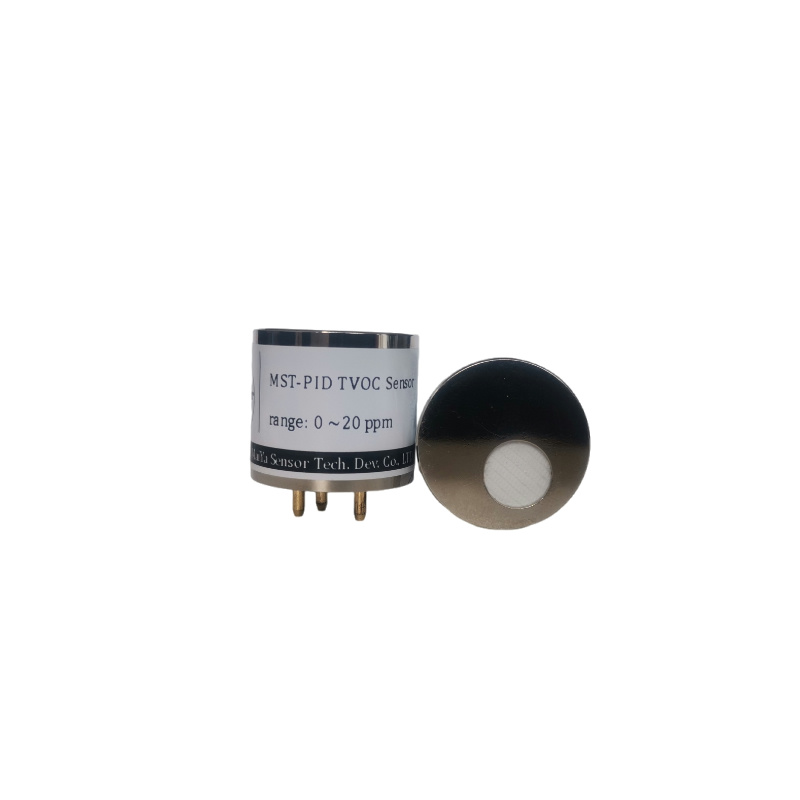PID (Photoionization detector) sensor use precautions
Views:233 Updated:2025-05-27
The PID (Photoionization Detector) sensor detects gas concentration by using ultraviolet (UV) lamp energy to ionize target substances, offering high sensitivity and being widely used for detecting volatile organic compounds (VOCs).  The UV lamp energy of PID sensors typically includes 9.8 eV, 10.6 eV, and 11.7 eV, and the appropriate energy level must be selected based on the ionization potential (IP) of the target gas. The lamp energy must exceed the gas’s IP for effective detection. For example, formaldehyde (HCHO) has an IP of 10.87 eV, requiring an 11.7 eV lamp for measurement, whereas a 10.6 eV lamp cannot detect it.
High humidity (>90% RH) may cause water condensation on the UV lamp window, affecting readings. PID sensors are typically used in dry environments or require moisture-resistant designs.
Exposure to high-concentration (>1000 ppm) or high-boiling-point VOCs (e.g., oils, aldehydes, aromatic hydrocarbons) can lead to the accumulation of ionization byproducts and condensation/adsorption of non-volatile residues (e.g., silicone oil, H₂S) on the UV lamp window. This reduces UV light transmittance, causing signal attenuation, prolonged response time, and decreased sensitivity. Prolonged exposure may permanently damage the lamp. Equipping the PID sensor with a pumping device during use can minimize contamination buildup, mitigate adverse effects, and extend the sensor’s lifespan.
The UV lamp energy of PID sensors typically includes 9.8 eV, 10.6 eV, and 11.7 eV, and the appropriate energy level must be selected based on the ionization potential (IP) of the target gas. The lamp energy must exceed the gas’s IP for effective detection. For example, formaldehyde (HCHO) has an IP of 10.87 eV, requiring an 11.7 eV lamp for measurement, whereas a 10.6 eV lamp cannot detect it.
High humidity (>90% RH) may cause water condensation on the UV lamp window, affecting readings. PID sensors are typically used in dry environments or require moisture-resistant designs.
Exposure to high-concentration (>1000 ppm) or high-boiling-point VOCs (e.g., oils, aldehydes, aromatic hydrocarbons) can lead to the accumulation of ionization byproducts and condensation/adsorption of non-volatile residues (e.g., silicone oil, H₂S) on the UV lamp window. This reduces UV light transmittance, causing signal attenuation, prolonged response time, and decreased sensitivity. Prolonged exposure may permanently damage the lamp. Equipping the PID sensor with a pumping device during use can minimize contamination buildup, mitigate adverse effects, and extend the sensor’s lifespan.
